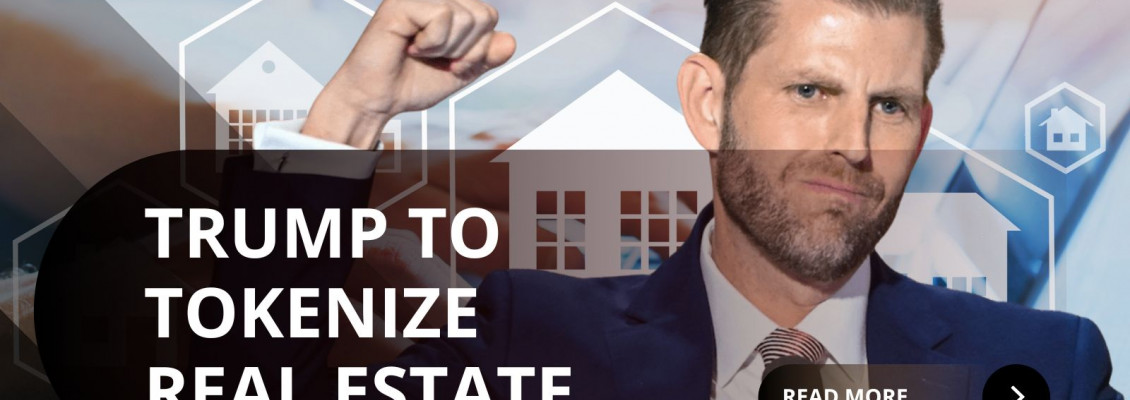
A new crypto venture backed by the Trump family, World Liberty Financial (WLFI), is making bold bets — from issuing a governance token to tokenizing real estate and launching a stablecoin. The project is stirring both interest and controversy as it bridges traditional assets and blockchain innovation.
What Is WLFI?
World Liberty Financial was founded in 2024 with deep ties to Donald Trump and his family. The Trump family holds a significant stake — estimated at 40–60% — in the firm, and up to 22.5 billion WLFI tokens were allocated to its members as part of the token launch.
WLFI is more than a token: it’s meant to be a crypto ecosystem. The project plans to issue a USD-pegged stablecoin called USD1, backed by U.S. Treasuries and cash equivalents, and to use WLFI holders’ votes to guide governance decisions. The platform also aims to let investors own fractional shares of real estate like Trump Tower Dubai, bringing property ownership onchain.
How the WLFI Token Debut Went
The WLFI token launch was explosive. Early trading pushed its value significantly higher than what early investors paid. But volatility followed. On its first day, the token dropped by nearly 15 %, then recovered partially.
At the token’s peak, the Trump family’s WLFI holdings were valued on paper at around $5–6 billion. However, insiders’ tokens were initially locked and could not be sold until later.
WLFI’s big listing came after a community vote with overwhelming support — around 99.9% of voting WLFI holders voted to unlock trading. That vote signaled a shift from closed governance toward public market participation.
Tokenizing Real Estate: What They’re Doing
One of WLFI’s boldest ambitions is fractional real estate. The company aims to convert iconic Trump properties into blockchain tokens, lowering the barrier to entry so that ordinary investors can own slices of luxury estates. For example, Trump Tower Dubai has been mentioned as a candidate for tokenization.
This model promises liquidity, divisibility, and exposure to real-world assets. But it also faces a major obstacle: liquidity. Many tokenized real-world assets (RWAs) struggle to sustain active secondary markets — just because you can split a property’s value into tokens doesn’t mean you can easily trade them on demand.
Broader Ecosystem Moves
WLFI isn’t just real estate. The project has expanded ambitions:
-
Partnership with Ondo: WLFI aims to integrate with real-world asset platforms so users can borrow, lend, and trade tokenized assets backed by real assets.
-
Stablecoin USD1: The stablecoin is already live on Ethereum and Binance Smart Chain. WLFI plans to expand USD1 to more chains and use it to fuel internal payments and trading.
-
Tokenized commodities: Plans are underway to tokenize commodities like oil, cotton, or timber — pairing them with USD1 to trade them under trustable, blockchain-based systems.
-
Crypto treasury: World Liberty set up a $1.5B “crypto treasury” via a partnership with a Nasdaq-listed blockchain firm, using WLFI tokens to fund growth, buybacks, and debt coverage.
Risks & Red Flags to Watch
This ambitious model comes with some red flags:
-
Insider concentration: A large share of WLFI is held by insiders (Trump family). Though WLFI’s terms try to limit influence by any one wallet, the concentration remains a governance risk.
-
Illiquid tokens: Many real-world asset tokens struggle with low trading volume. Even if ownership is fractionalized, it may not be easy to exit positions.
-
Regulatory scrutiny: WLFI blurs lines. With Trump family involvement, large token allocations, and real estate assets, the potential for conflict of interest and scrutiny from regulators is high.
-
Valuation volatility: Early gains were massive, but price swings are severe — what’s on paper today might evaporate tomorrow.
-
Execution risk: Tokenizing real estate, stablecoin issuance, and crypto finance all require strong legal, technical, and financial execution. Any weak link could derail the model.
Why It Matters
WLFI reflects a new phase in crypto: combining real-world assets, governance, stablecoins, and public figures. If successful, it could redefine access to luxury assets, reshape how wealth is tokenized, and bring more traditional investors into blockchain.
But WLFI’s trajectory will test whether tokenization is more than hype — whether markets, regulation, and infrastructure can support the vision. It’s a high-stakes experiment at the intersection of power, money, and innovation.

Leave a Comment